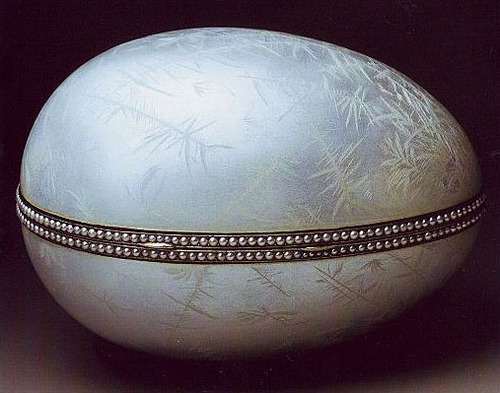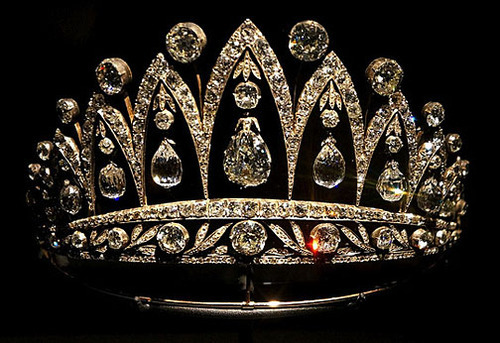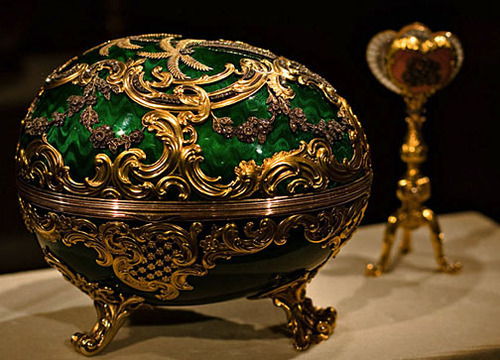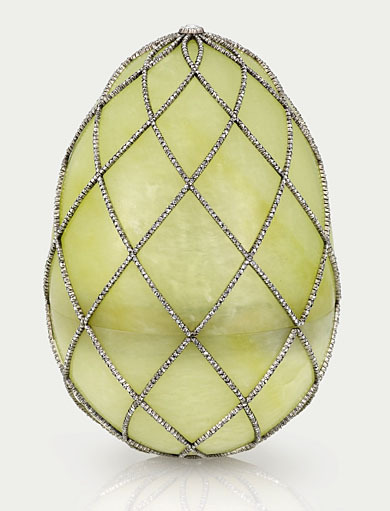The awe-inspiring work of Peter Carl Fabergé, the Russian jeweler whose creativity and craftsmanship fundamentally changed the way society looked at jewelry more than 100 years ago, is now on display at the Houston Museum of Natural Science. Fabergé is most famous for the miniature jeweled Easter eggs that his House of Fabergé crafted for the Russian royal family from 1885 to 1917.

Nobel Ice Egg was commissioned by Swedish industrialist Emanuel Nobel between 1913 and 1914. It is made of platinum and enamel, and is sometimes referred to as the "Snowflake Egg."
The exhibit, titled Faberge: A Brilliant Vision, opened this past Friday and comprises 350 items on long-term loan from the privately held McFerrin Collection.
Among the highlights of the exhibit are two newly acquired Fabergé eggs — the breathtaking Diamond Trellis Imperial Egg and one of the celebrated Kelch Eggs. The exhibition also includes past favorites, such as the beautifully etched Nobel Ice Egg and the dazzling Empress Josephine Tiara.

Carl Fabergé crafted this diamond tiara circa 1890. The briolette diamonds were a gift from Tsar Alexander I of Russia to Empress Josephine of France after her divorce from Napoleon Bonaparte. This piece is one of only a few tiaras ever made by Fabergé.

The 1902 Kelch Rocaille Egg is made of multicolored gold, platinum, rose-cut diamonds and translucent green enamel. The egg measures 4.75 inches by 5.5 inches.
Fabergé biographer Bruce Schulman wrote that Fabergé's eggs changed the way Europe’s upper class viewed jewelry. "Until that time, many felt the value of jewelry was intrinsic, based upon the precious metals and stones,” said Schulman. “Fabergé felt that the artistic creativity and fine craftsmanship of jewelry made it art that transcended bullion value.”

The Diamond Trellis Egg was crafted for Alexander III of Russia, who presented it to his wife, the Empress Maria Feodorovna. The egg is carved from pale green jadeite and is enclosed in a lattice of rose-cut diamonds.
During its heyday, the House of Fabergé employed more than 500 craftsmen in workshops in both Moscow and St. Petersburg, and boasted sales branches in Moscow, St. Petersburg, Kiev, Odessa and London.
No comments:
Post a Comment